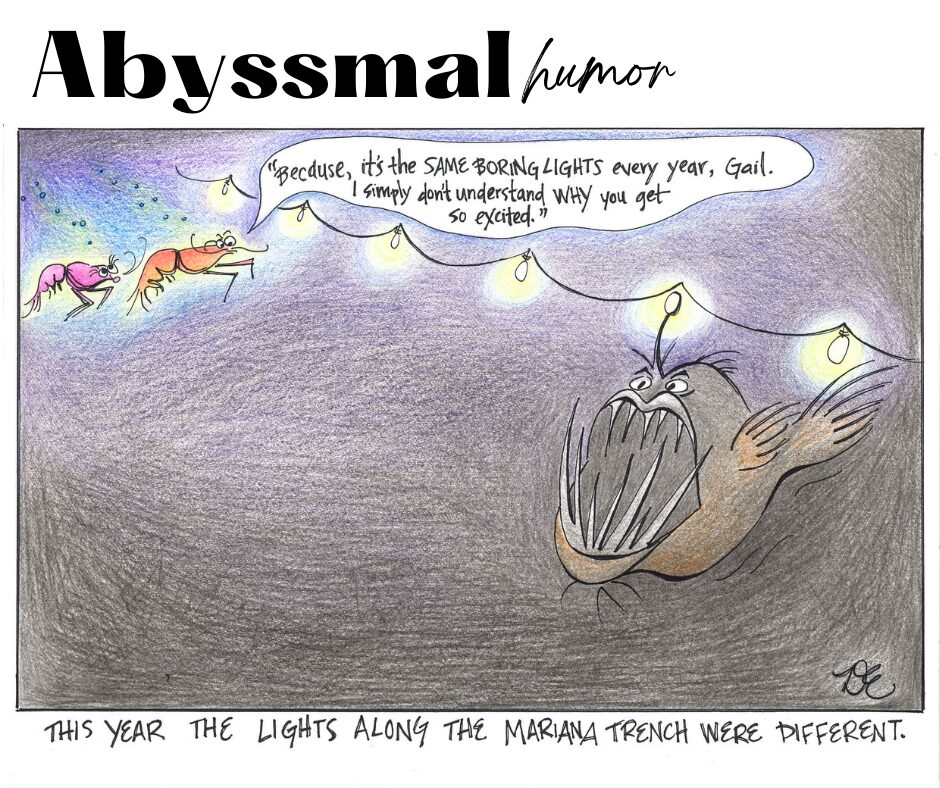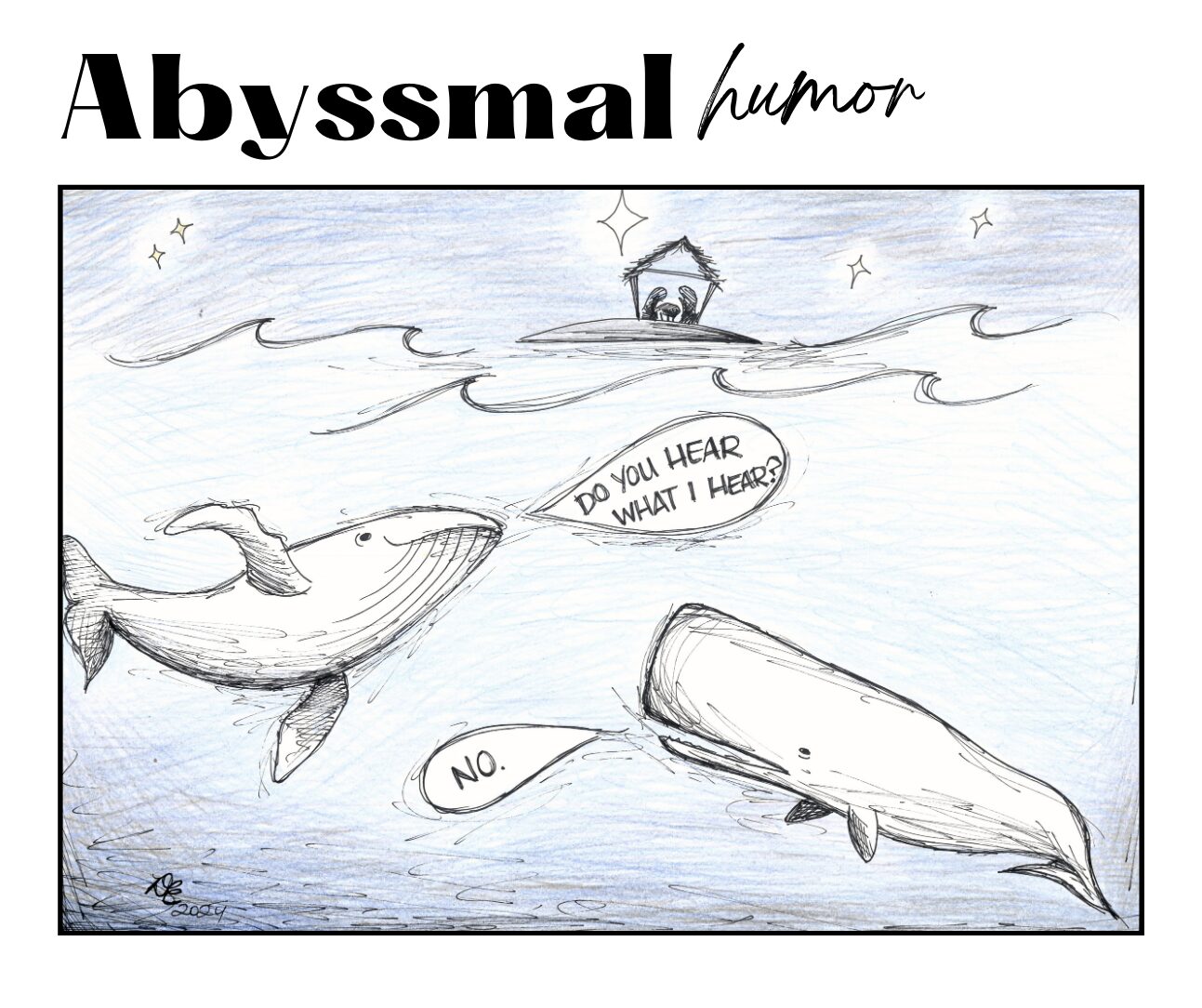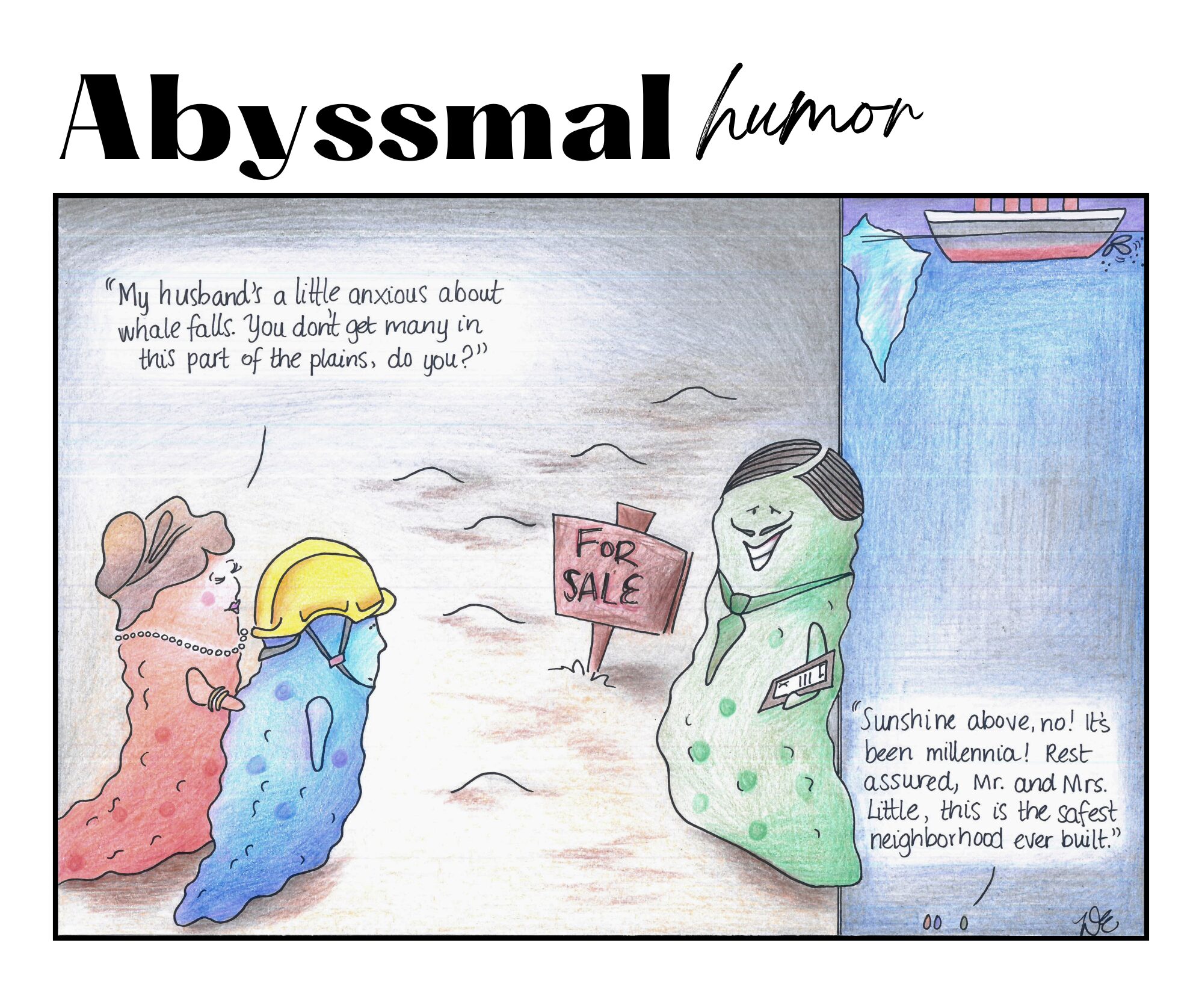Just for (deep-sea) fun
The ‘Abyssmal Humor’ cartoon series
Created by Diane Esson (MARE-Madeira/ARDITI)

Happy Christmas Lanternfish
December 2022, © Diane Esson
The Marina Trench is the deepest oceanic trench in the world, with its deepest point (the Challenger Deep) deeper than Mount Everest is high.

Don’t Play In Your Dinner
January 2023, © Diane Esson
Organic material that falls from upper layers of the ocean into the deep sea is known as marine snow, and is a source of food for deep-sea creatures. Learn more.

Late Again!
January 2023, © Diane Esson
Jacques Piccard, a Swiss Oceanographer, along with Don Walsh, were the first people to explore the Challenger Deep — the deepest known part of the ocean (found in the Mariana Trench). Learn more here

Señor Inky Pinky
March 2023, © Diane Esson
Deep-diving cetaceans like sperm whales use echolocation to hunt for food in the dark. MARE-Madeira research suggests that these animals may confuse plastic litter for food, given similarities in the acoustic signatures of plastic and their prey (like squid).

With a Voice as Big as the Sea
December 2024, © Diane Esson
Toothed whales (like sperm whales) communicate with high-frequency vocalizations, while baleen whales (like humpback whales) use low-frequency vocalizations. Learn more about how cetaceans use sound in MARE-Madeira’s blog.

Unsquishable
October 2025, © Diane Esson
Much of the ocean’s available organic material is digested and reduced to detritus before it reaches the seafloor, sprinkling down as ‘marine snow‘. But some things — like whales, man-made waste and ships — sink near fully-formed. Whale falls are quickly consumed, but our pollution isn’t: the deep-sea is littered with our plastic and metal that can take hundreds to thousands of years to decompose. (Xhu et al., 2024, Chamas et al., 2020)
